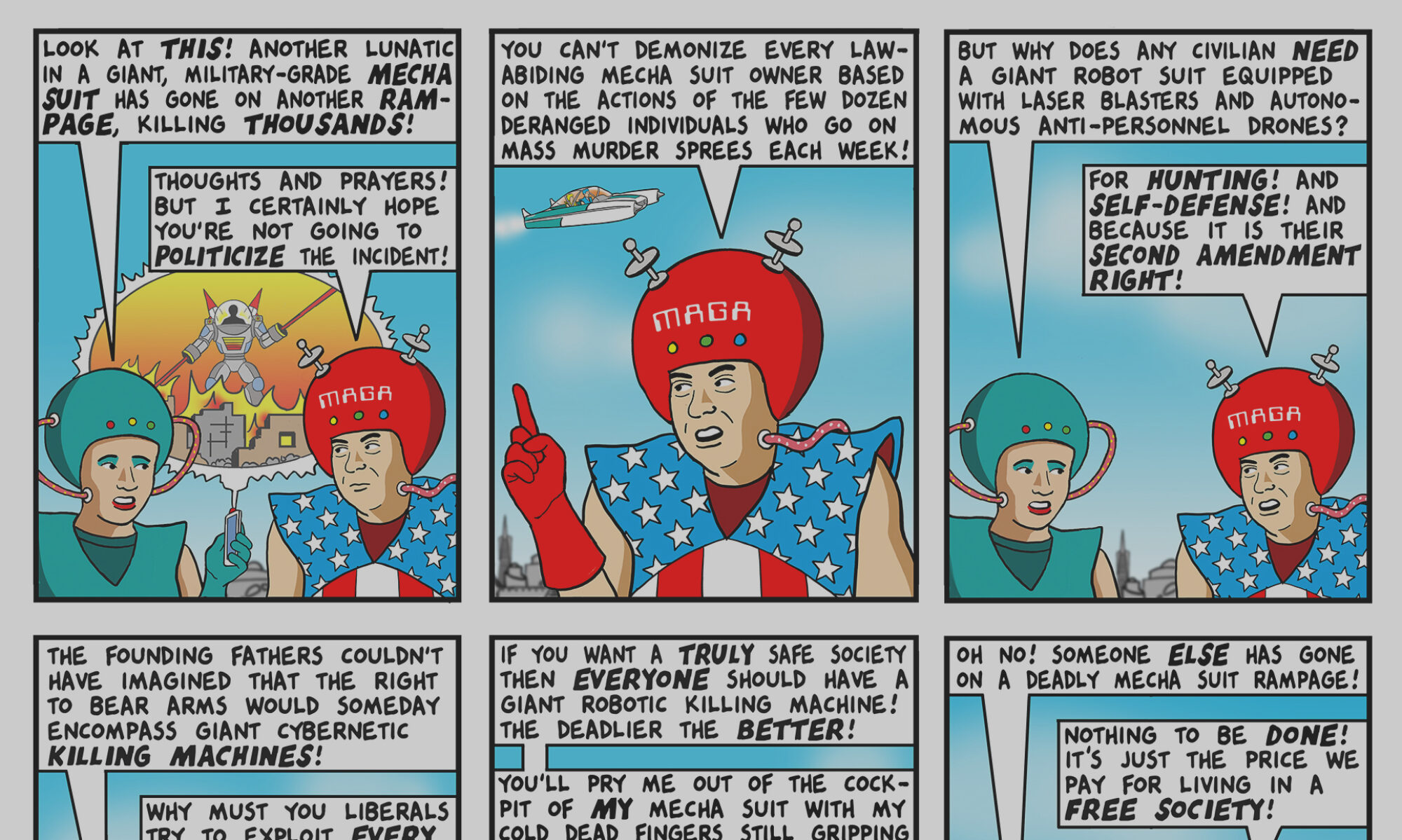Like a lot of you, I found the “human-animal hybrid” line peculiar, to say the least. But apparently it’s actually something people are talking about:
Scientists have begun blurring the line between human and animal by producing chimeras—a hybrid creature that’s part human, part animal.
Chinese scientists at the Shanghai Second Medical University in 2003 successfully fused human cells with rabbit eggs. The embryos were reportedly the first human-animal chimeras successfully created. They were allowed to develop for several days in a laboratory dish before the scientists destroyed the embryos to harvest their stem cells.
And at Stanford University in California an experiment might be done later this year to create mice with human brains.
And doesn’t that last image just make you want to run screaming out of the room?
More here.
…okay, cheap laughs aside, here’s a more informed perspective than mine:
It’s pure political calculus. He throws away the mad scientist and pig-man vote, and wins the religious ignoramus vote…and we know which one has the majority here.
But guess what? Creating chimeras is legitimate and useful scientific research; it’s really happening. Of course, it isn’t with the intent of creating monstrous half-animal/half-human slaves or something evil like that, and scientists are well aware (or should be well aware) of the ethical concerns, and it’s the topic of ongoing debate. Let’s consider one recent example of such an experiment.
Down syndrome is a very common genetic disorder caused by the presence of an extra chromosome 21. That kind of genetic insult causes a constellation of problems: mild to moderate mental retardation, heart defects, and weakened immune systems, and various superficial abnormalities. It’s also a viable defect, and produces walking, talking, interacting human beings who are loved by their friends and families, who would really like to be able to do something about those lifespan-reducing health problems. We would love to have an animal model of Down syndrome, so that, for example, we could figure out exactly what gene overdose is causing the immune system problems or the heart defects, and develop better treatments for them.
So what scientists have been doing is inserting human genes into mice, to produce similar genetic overdoses in their development. As I reported before, there have been partial insertions, but now a team of researchers has inserted a complete human chromosome 21 into mouse embryonic stem cells, and from those generated a line of aneuploid mice that have many of the symptoms of Down syndrome, including the heart defects. They also have problems in spatial learning and memory that have been traced back to defects in long-term potentiation in the central nervous system.
These mice are a tool to help us understand a debilitating human problem.
George W. Bush would like to make them illegal.
